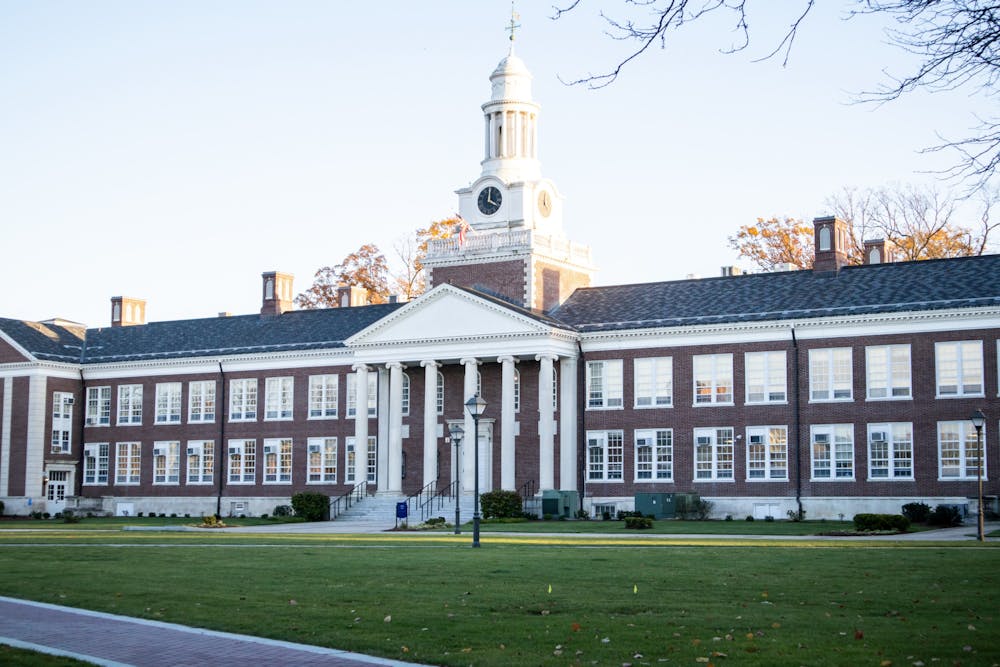By Mike Sherr
Editor-in-Chief
Matthew Kaufman
Managing Editor
Following his semester-long “listening tour,” Interim President Bernstein will soon announce new initiatives designed to ensure the College’s long-term financial sustainability. Ahead of these announcements, Interim Treasurer Richard Schweigert and Interim Associate Vice President Mark Mehler sat down for an interview with The Signal to break down the College’s finances, including its budget, debt, state funding, tuition, and room and board.
Revenue
The College receives revenue from three main sources: tuition, state appropriations, and room and board. The biggest proportion of revenue, about 85%, comes from tuition and room and board.
Revenue sometimes falls short of expectations. In an email last month, Bernstein announced that the College had overestimated anticipated revenue for FY2024, because “tuition, fee and housing revenue fell short of projections,” leading to a shortfall of $20 million. The administration addressed this shortfall by reducing costs and drawing $5 million from its reserves, which are intended to be used during emergencies.
The College has previously increased revenue by raising tuition, but Schweigert acknowledged that the College’s tuition is already relatively high.
“I think we're all aware that the price point is probably at a point that you all aren't enjoying and probably haven't been enjoying for a while,” Schweigert said, “and so that's the challenge and dilemma.”
Former Treasurer Lloyd Ricketts expressed a similar sentiment to The Signal in 2022, saying “The College is not trying to balance the budget on the backs of students when it comes to running the operation.”
Expenses
Along with general operating expenses, the biggest expense the College pays for is compensation and benefits for all faculty and staff, accounting for 2/3 of expenses. Expenses grow every year with inflation, according to Schweigert. This “mandatory inflation” is accounted for in the College’s annual budgets.
The College’s budgeting practices under Interim President Bernstein will be more fiscally conservative, a departure from previous administrations that prioritized growth, according to Schweigert. Budget planners will wait to receive revenue before deciding how to spend it, as opposed to previous years where planners have used projected revenue to approve new spending.
The recent deal between the College’s faculty union and the state is also expected to grow expenses in future years, according to Dave Muha, the College’s associate vice president for College advancement and chief communications and marketing officer. The tentative agreement includes a 3.5% increase in cost-of-living expenses for faculty and a 30% increase in pay for adjuncts.
Current Debt
Moving forward, the College is looking to address the overall debt burden of around $340 million that it faces, according to Mehler. The debt load, which has been refinanced several times, is set to be paid in annual installments of $13 million until FY2026, when the College will begin paying $26 million per year.
Most of this debt has been accumulated from the construction of new buildings. The state does not pay for capital projects such as academic and residential buildings, leaving institutions to either pay upfront or finance the construction with debt.
“Well over a decade ago, they stopped funding and taking care of buildings at higher ed institutions,” Schweigert said. “So there was lots of borrowing that went on.”
“The debt goes back to the early ‘90s,” Ricketts said in 2022. “Normally when you issue debt, it’s a 30 year debt… so you have a 30-year repayment period.”
In order to prepare for these debt payments, the College has been setting money aside each year specifically to save for the jump in the debt service.
“[The savings will] get us through 7 of the 10 years of payments until 2032,” Schweigert said.
State funding
A smaller portion of the College’s revenue comes from state appropriations. Every June, state legislators in Trenton vote on a budget appropriations bill that outlines what agencies receive what amount of funding. The College, being a public entity, has to go through the same process where it requests operating funds from the state.
The College requested roughly $30.6 million for FY2024, the current fiscal year, and the state ended up appropriating about $32.5 million for “institutional support.”
“That was very much appreciated,” Schweigert told The Signal, regarding the $1.9 million addition.
For decades, the College’s expenses rose due to inflation but state appropriations remained relatively stagnant. In FY2003, for example, the state paid for about 49% of the College’s education and general budget, according to a presentation made at last year’s budget hearing. In FY2023, however, the state paid for only 27% of the College’s budget.
“The state themselves could cure [the College’s projected deficit], but I remind people that the states have their own sets of challenges,” said Schweigert. “To some extent, they're backing out of higher education.”
In other years, the state cut overall funding as well as specifically for the College. In 2009, state budget cuts painted a “very somber proposal for public higher education in New Jersey,” Former College President R. Barbara Gitentstein wrote in a campus-wide email at the time.
While overall higher education spending has stagnated, funding allocations are not equal among state colleges. Eight public New Jersey institutions receive more state funding than the College per student. Rowan, for example, received double the College’s allocation per student in FY2023, collecting $8,000 per student compared to the College’s $4,000 per student.
Mehler acknowledged this discrepancy and noted that the College routinely lobbies the state for increased funding and demonstrates its strong outcomes among students.
“That’s a great question,” said Mehler, “because we’d like to know, too.”







